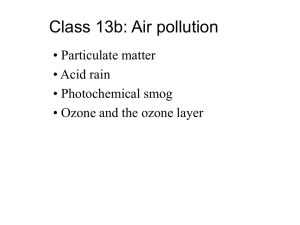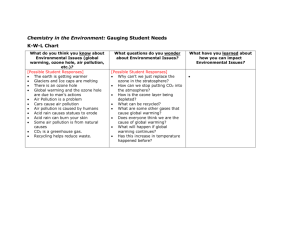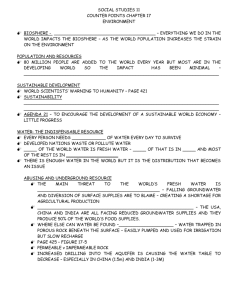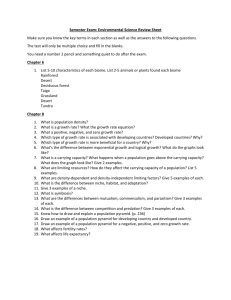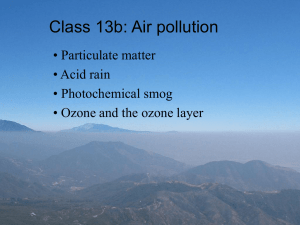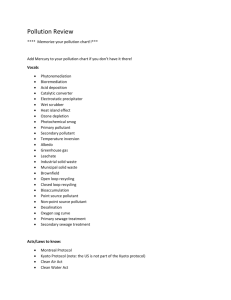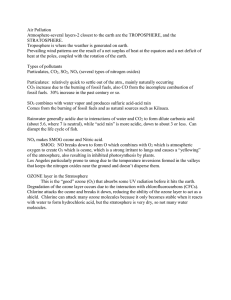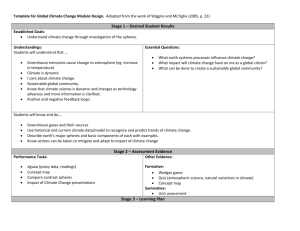Human Impact on the Atmosphere Global Warming and the
advertisement
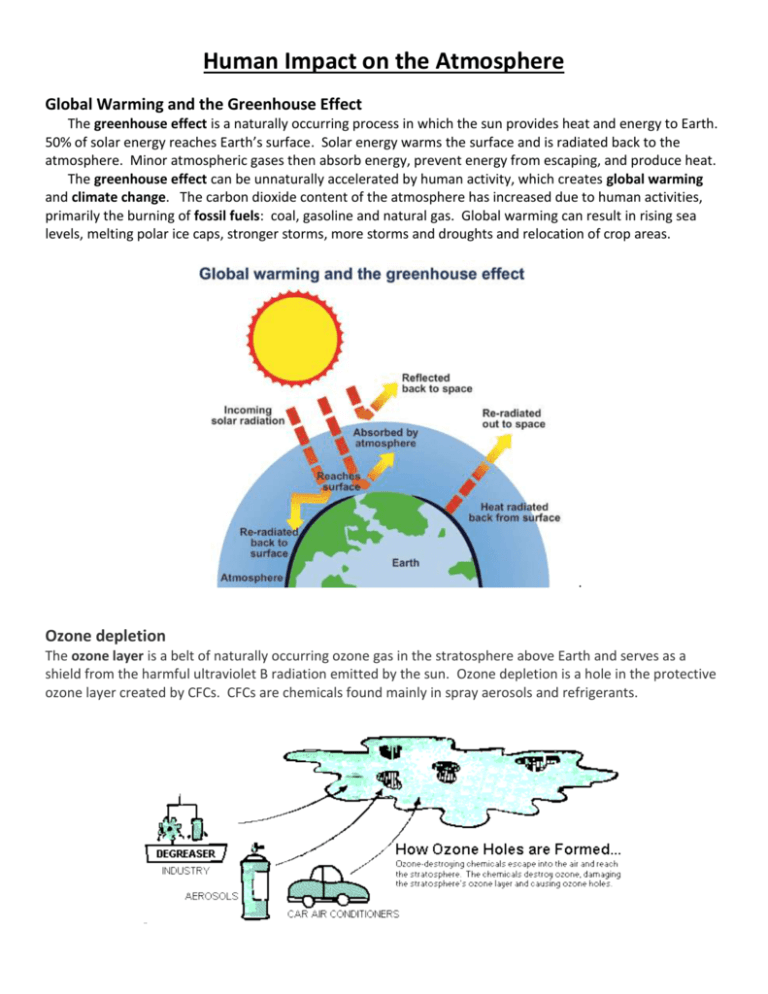
Human Impact on the Atmosphere Global Warming and the Greenhouse Effect The greenhouse effect is a naturally occurring process in which the sun provides heat and energy to Earth. 50% of solar energy reaches Earth’s surface. Solar energy warms the surface and is radiated back to the atmosphere. Minor atmospheric gases then absorb energy, prevent energy from escaping, and produce heat. The greenhouse effect can be unnaturally accelerated by human activity, which creates global warming and climate change. The carbon dioxide content of the atmosphere has increased due to human activities, primarily the burning of fossil fuels: coal, gasoline and natural gas. Global warming can result in rising sea levels, melting polar ice caps, stronger storms, more storms and droughts and relocation of crop areas. . Ozone depletion The ozone layer is a belt of naturally occurring ozone gas in the stratosphere above Earth and serves as a shield from the harmful ultraviolet B radiation emitted by the sun. Ozone depletion is a hole in the protective ozone layer created by CFCs. CFCs are chemicals found mainly in spray aerosols and refrigerants. Air pollution and Smog Air pollution – harmful particles caused by volcanoes, forest fires, and human activity. Smog is a type of air pollution. The word “smog” comes from a combination of smoke and fog. Smog is a brownish haze that forms in air polluted with nitrogen oxides and hydrocarbons that come mainly from automobile exhaust. When these pollutants are present, solar radiation can trigger chemical reactions that form ozone and other harmful substances. Ozone is beneficial in the stratosphere. However, ground-level ozone can cause respiratory problems and hurt crops. Beijing, China Acid Rain Acid Rain forms when sulfur dioxide and nitrogen react with water vapor to create an acid rain that kills fish and forests, and damages structures of marble and limestone. The main sources of these pollutants are electric power plants fueled by coal and other fossil fuels.

